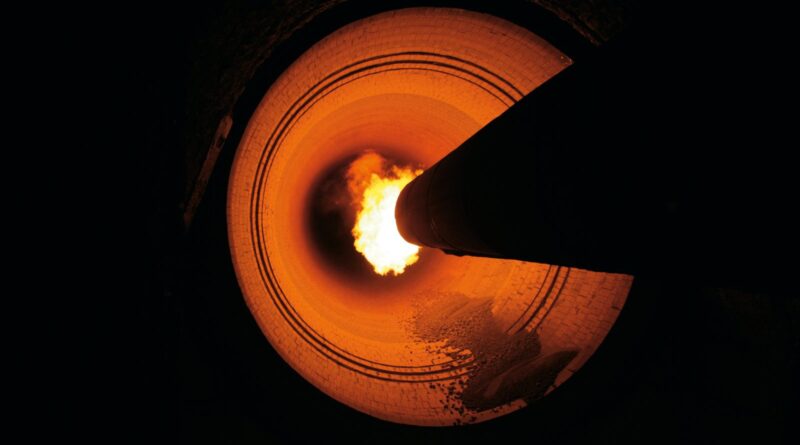Pure oxyfuel – A brick for a climate-neutral cement production
engineering. tomorrow. together. At thyssenkrupp this is more than just a claim. Every day our engineers across departments and sectors research and develop the innovations of tomorrow. Many of them are patented. One example is thyssenkrupp’s polysius® pure oxyfuel process, which makes the cement industry more sustainable.
There is a problem in cement industry: It causes around seven percent of global CO2 emissions. New solutions are needed to make this valuable building material more sustainable in the long term. The Oxyfuel process from thyssenkrupp is one of these and makes it possible to concentrate, capture and reuse the climate-damaging CO2 emissions in cement production in a cost-efficient way.
With the oxyfuel process, our experts aim to make the CO2 available in as pure as possible. The engineers have changed their perspective and considered the greenhouse gas, which is harmful to the climate, as a raw material that can ideally be used in the production of new products and for the generation of synthetic fuels.
Concentrating CO2 emissions in cement production is one of the most important challenges facing the industry today. The oxyfuel process is an important technology.
Using the oxyfuel process to capture CO2 where it is produced
“In the production of cement, the harmful climate gas CO2 is produced during calcination and combustion,” explains Jost Lemke. In the production of cement clinker, the release of CO2 is unavoidable, as the gas results not only from the turnover of the fuel used, but also from the limestone – essential for cement production – that is released during calcination. “thyssenkrupp’s innovation lies in not simply emitting the CO2,but separating it in concentrated form, concentrating it and thus making it usable,” says Lemke.
Oxyfuel – pure oxygen replaces air in the furnance
But how does it work? Jost Lemke explains: “In the clinker burning process commonly used, oxygen is used from the ambient air supplied. The oxygen content of the ambient air is around 21%. By using ambient air, nitrogen is introduced into the system, so that the proportion of CO2 in the exhaust gas is only about 25% – 30%.”
The addition of pure oxygen with the polysius® pure oxyfuel process eliminates the need for atmospheric nitrogen in the clinker burning process. The gas volume is significantly reduced, allowing a high concentration of CO2 in the off-gas so that almost 100% of the climate-damaging carbon dioxide can be captured in concentrated form,” adds Dr. Markus Sauer, Head of Integrated Plant Proposals at thyssenkrupp Polysius. “Complex gas recirculation, as considered in the first-generation oxyfuel process, can be dispensed with here. This leads to overall reduced investment and operating costs for the polysius® pure oxyfuel process,” says Sauer.
Instead of emitting the CO2 into the atmosphere, it is separated, stored or made usable for other industries. C02 can be used as a raw material to produce so-called “refuels”. Another important feature of the process is that it can be implemented both in the construction of new cement plants and in the conversion of existing plants. For the cement industry, this is a first major step toward green transformation.
Green and profitable with oxyfuel
To fully unlock the potential of oxyfuel, the engineers in thyssenkrupp’s Polysius business unit are continuously researching the technology. “Since the initial idea, we have developed many new approaches to make the oxyfuel process more efficient and even easier to integrate into the overall cement production system,” say Jost Lemke and Eike Willms.
Climate-friendly on a semi-industrial scale
The next step? “The research company founded by the four cement manufacturers Buzzi Unicem SpA – Dyckerhoff GmbH, HeidelbergCement AG, SCHWENK Zement GmbH & Co. KG and Vicat S.A., founded the research company “CI4C” – Cement Innovation for Climate, commissioned the Polysius business unit a few months ago to build a polysius® pure oxyfuel kiln system on the site of the Mergelstetten cement plant in southern Germany”, explains Dr. Markus Sauer. “Currently, the execution of this prototype is underway to push our polysius® pure oxyfuel technology further forward.”




